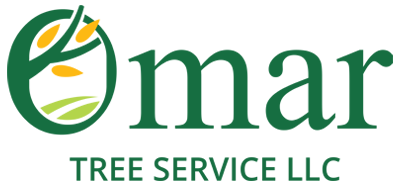Trees don’t just look pretty. A cut in the wrong spot can rip apart their future. Pruning isn’t optional. It’s foundational to keeping trees alive, strong, safe, and… useful. Remove dead or diseased branches, and you’re stopping decay from spreading. Let it sit, and you invite heart rot, a fungal disease that eats away at the core of trunks and limbs. It starts with wounds or improper cuts, exactly the kind of tree trimming that shouldn’t be done.
And then there’s structure. Young trees, pruned early and shaped, end up with strong trunks, evenly spaced main branches, and a dominant leader. That avoids weak crotches or forks that will break later. If you’re unsure how often that shaping should happen, here’s a guide on how often trees should be trimmed.
Get the structure right when the tree is young, and it sets up for decades of resistance to storms. Skip it or do it wrong, and you get storms bringing unsafe, broken branches. 
When to prune and when not to
Most deciduous trees? Winter or dormancy. Cuts heal cleaner, and disease is less active. For fruiting trees?
Spring-blooming shrubs need trimming right after flowering, not before. Summer bloomers go before spring growth starts. For pine species, timing is a bit more sensitive. Check out the guide on the best time to trim pine trees.
How to prune properly
Target the right branches
You’re removing dead, diseased, or damaged bits. Also crossing branches, suckers, water sprouts, thorns at head level, the stuff that kills structure or invites rot. For more signs that it’s time, see this list of tree trimming warning signs.
Respect the branch collar
This is the bulge or “shoulder” where the branch meets the trunk. It’s a protective zone the tree uses to seal wounds. Cut flush to that zone, don’t damage it. Clean-up and healing happen naturally if you’re precise.
Avoid topping
Topping the careless lopping off of the top leaves huge wounds, invites decay, and leads to multiple weak shoots. Topped trees often become hazardous. If you’re curious about costs, here’s a breakdown of tree-topping cost.
Don’t over-prune
For shrubs, don’t remove more than one-third of live wood. For medium and large trees, keep cuts under 15–20 percent per session. Too much removal shocks the tree, stunts growth, and invites disease.
Use clean, sharp tools
Hand pruners, loppers, and saws sized to the branch thickness. Always sterilize, especially when cutting diseased bits.
What happens if you get it wrong
- Structural failure: Weak branch unions break in storms; poor early pruning leads to problems later.
- Infection and decay: Cuts that ignore branch collars invite fungal decay, heart rot.
- Weak regrowth after topping: Multiple lead shoots sprout weakly attached, with future risk.
- Over-pruning shock: Removing too much slows growth, and can kill a tree.
If a mistake leads to instability, sometimes you’re left needing removal instead of repair. In that case, knowing the average cost for tree removal helps you plan.
Pruning benefits, with numbers and specifics
- Disease control: Removing affected parts stops the spread to the whole canopy.
- Airflow/light: Thinning improves both, cuts fungal disease risk.
- Longevity and structure: Mature trees live longer and resist weather when properly structured early.
- Avoiding replacement cost: Removal and replanting can top $1,200; pruning is far cheaper.
Common mistakes people make
- Cutting too close or too far from the branch collar does not heal well.
- Topping, believing you’re “reducing size,” but creating hazard trees.
- Over-pruning large sections in one go.
- Using dirty tools and spreading disease..
Putting it together, realistic guidelines
- Start young. Structural pruning early shapes long-term integrity.
- Cut precisely at the branch collar.
- Stick to removing <20 percent per session.
- Clean tools, wear PPE.
- Know your species and the timing of stone fruits in summer, bloomers timed right.
- Inspect periodically every 1–4 years, depending on size and health.
If you’re not sure when to call in experts, check this page on Kansas City tree pruning services.
Wrapping up
I’ve listed types of pruning, when to do it, how to do it, what tools, what timing, the mistakes, and the numbers. It sounds straightforward when you write it out, but in real life, you’re climbing up, limbs overhead, bugs buzzing, saw slipping. You’re balancing the safety of your roof or kids below, figuring out how much to cut without screwing up the tree. It’s messy. But grounded. And every detail here comes from real sources, not just guesswork.
Proper pruning means a tree that lasts decades, resists wind, avoids decay, and may produce fruit. Do it right, and there’s health, beauty, and safety. Screw it up, and you risk disease, collapse, or worse. But do it skilfully, timely, and informed, it’s worth it.
Jose Maldonado
Owner, Omar Tree Service LLC
Located: 3020 Bellaire Ave, Kansas City, MO
Phone: +1 (816) 694-6352


